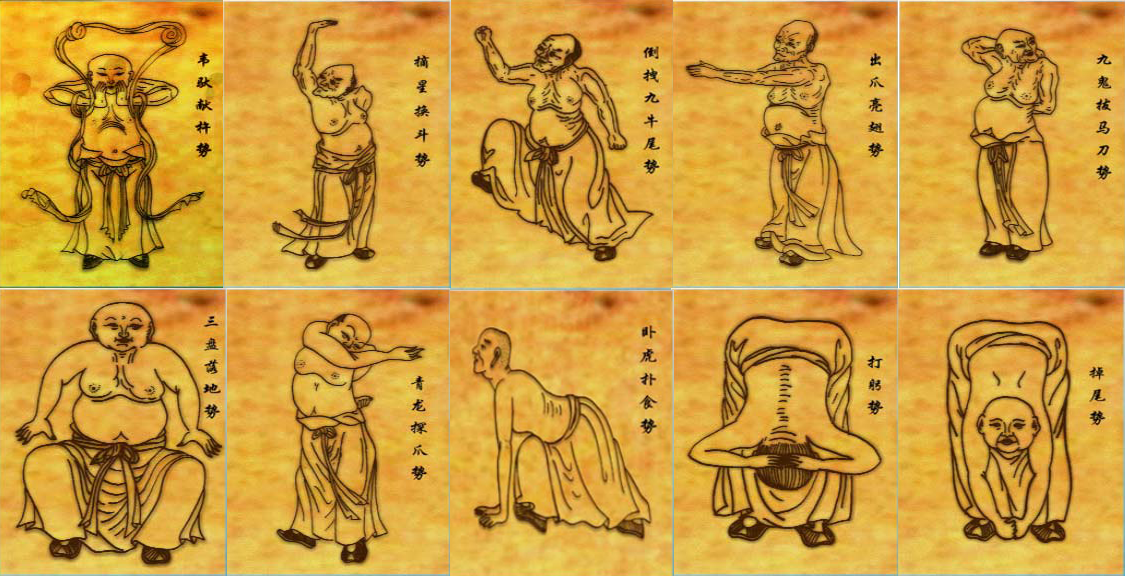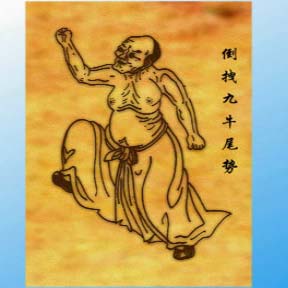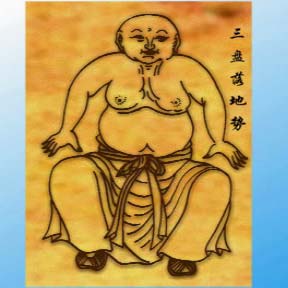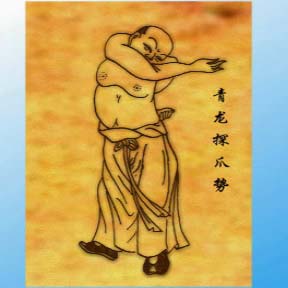Yi Jin Jing or Muscle and Tendon Changing Classic is considered a form of qi gong exercise. Qi gong is a body of gentle exercises which consists of a combination of moves which are repeated a few times each. There are a limited set of movement combinations and whether you’ve been learning the movement combinations or this is your first time walking into the classroom, you’ll be able to follow along and start experiencing the benefits from the first class.
These movement combinations stretch the body’s muscles, tendons and ligaments for improved range of motion, mobility and resiliency. As well, these exercises improve the movement of the fluids of our bodies such as blood, synovial fluid and lymph. Practicing qi gong also helps build body awareness and proprioception of how it moves through space.
Just like tai chi, qi gong is both an external as well as an internal movement practice. This unique trait of qi gong helps promote improved health and wellness which can be used as an alternative or as a compliment to cardiovascular or strength training workouts.
Yi Jin Jing Qi Gong
Yi Jin Jing is one of the many forms of qi gong and it is known to be practiced by monks in the Shaolin Temple. Yi Jin Jing is, by far, the most intense qi gong form among the forms recognized by the Chinese Health Qi Gong Association.
The word “Yi” means change or transform. The word “Jin” means muscle/sinew/tendons. And, the word “Jing” means sutra but it is very often translated as classic to mean a valued piece of work. The name describes this qi gong form is a set of exercises that can transform and renew the muscles and tendons in your body making them strong, flexible and healthy.
Yi Jin Jin Movements
Yi Jin Jing is unique in that the movements are both vigorous and intense, but at the same time it is also supple and gentle. The exercises require the use of intention to direct the exertion of muscles to hold a static pose. Breathing should remain natural while the mind is focused on the movement at hand.
Characteristics of Yi Jin Jing include:
- Movements are done standing, sometimes bending forward or crouched down but never lying or sitting down.
- Eyes are always open, never closed.
- Movements are slow and relaxed in between the static poses.
- There is active tension in a static pose.
- Movements can be adapted to reduce the torsion or stretch based on the physical condition of the practitioner.
The key characteristics of Yi Jin Jing exercises are:
- Quietness: A calm mind and body allows energy to flow unimpeded through the body.
- Slowness: Slow movements allow better blood flow to achieve deep muscle flex.
- Extension: Each movement must be executed to its maximum extension to achieve flexibility.
- Pause: Tension for a pose needs to be held for a period of time.
Health Benefits of Yi Jin Jing Qi Gong
The exercises of Yi Jin Jing have been shown to be very effective in boosting the recovery of injured muscles and tendons, especially in the areas of the neck, back and shoulders. I have personally found it to be extremely helpful in preventing or treating conditions like frozen shoulder. The movements will stretch and strengthen muscles and sinews, improve posture and increase flexibility of the core body.
The movements also require strong will power to maintain the exertion of muscular strength, thus improving our endurance.
The traditional wisdom says that with regular Yi Jin Jing practice, these are the outcomes people will experience:
- The first year of training gives back physical and mental vitality
- The second year enhances blood circulation and nurtures meridians
- The third year allows flexibility to muscles and nurtures the organs
- The fourth year improves the vitality of meridians and viscera are nurtured
- The fifth year results in the marrow being washed and the brain nurtured
Yi Jin Jing Moves
| 韦驮献杵势 Wei Tuo Presenting the Pestle
|
摘星换斗势 Plucking Stars on Each Side
|
| 倒拽九牛尾势 Pulling Nine Cows by their Tails
|
出爪亮翅势 Showing Talons and Spreading Wings
|
| 九鬼拔马刀势 Nine Ghosts Drawing Sabers
|
三盘落地势 Sinking the Three Bodily Zones
|
| 青龙探爪势 Green Dragon Displaying Its Claws
|
卧虎扑食势 Tiger Springing On Its Prey
|
| 打躬势 Bowing Down in Salutation
|
掉尾式 Swinging the Tail
|
Getting Started with Qi Gong
Qi Gong is quite a popular class here at Ji Hong Tai Chi Mississauga. People attend this course as a supplement to their tai chi training or on its own as a regular work out where they attend from once a week to three or more times per week. Qi gong is one of our most well-attended classes.
If you have never attended tai chi at our studio, we would start you with the Learn Tai Chi program. The Tai Chi Basics course allows everyone to gain basic vocabulary as well as a basic understanding of internal movements while being able to attend unlimited classes of qi gong and fitness classes. This will help people gain from both the external movement benefits as well as maximize the gains from the more beneficial internal movements outcomes.
To get started, contact us to attend a trial session or an upcoming open house event.


 1
1 2
2 3
3 4
4 5
5 6
6 7
7 8
8 9
9 10
10
Beautiful and useful to better understand these profound movements. Thanks so much!
Thank you. Glad you found the information to be useful, hope it will add to your qi gong practice.
Hello! I am doing some research on Yi Jin Jing for my Doctoral degree in Chinese Medicine and would love to know what resources you obtained this information so that I may read the source texts in more detail. Thanks!
You can check out publications from the Chinese Health Qi Gong Association. There is also the International Health Qi Gong Federation website: http://ihqfo.org/
You may find some use research material there.
Much of the information in the blog post is based on my own personal experience practising the form. plus feedback from students who have felt its benefits.
Practicing taiji and qigong for many years has blessed me with health which is priceless. Age 72
How can I experience the benefits of this qi going without attending classes? Thank you. Dawn
In the absence of in-person classes, the next best option is to attend classes virtually or follow the video lessons. Please send me an email if you need more specifics on the virtual or video lessons.
Excellent article, I have been practicing for sometime. Thank you 😊 http://www.zing-zang.com